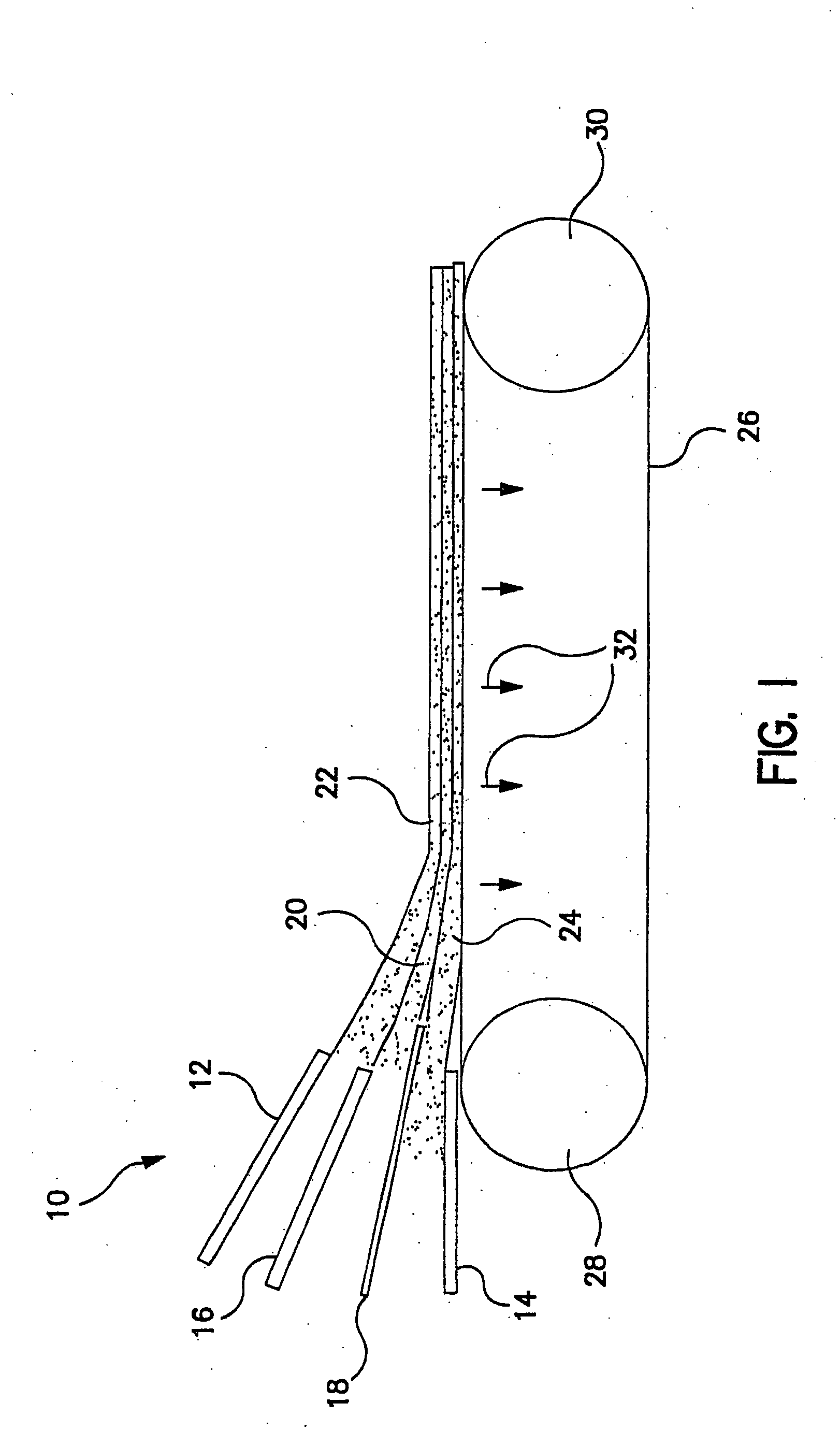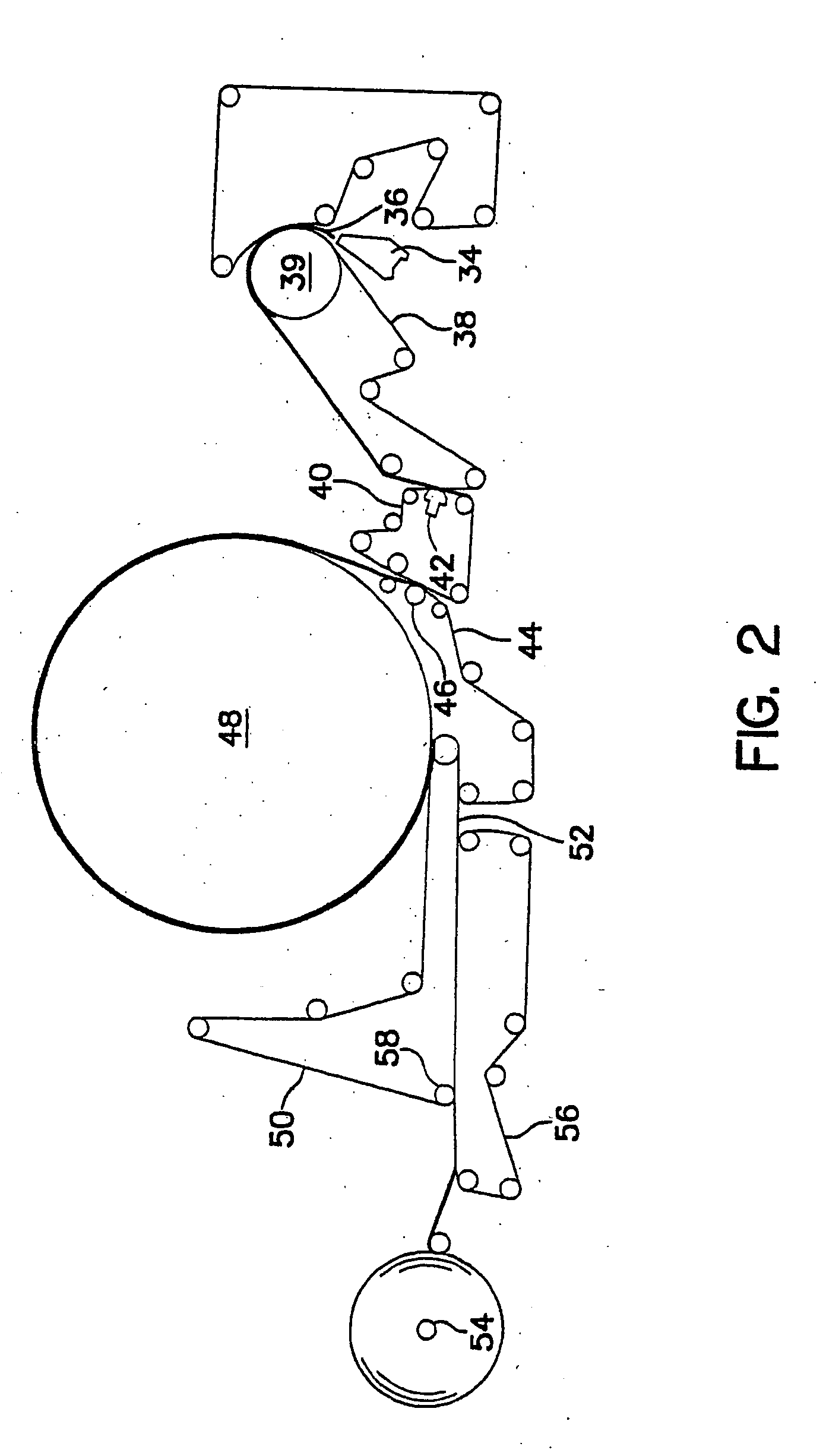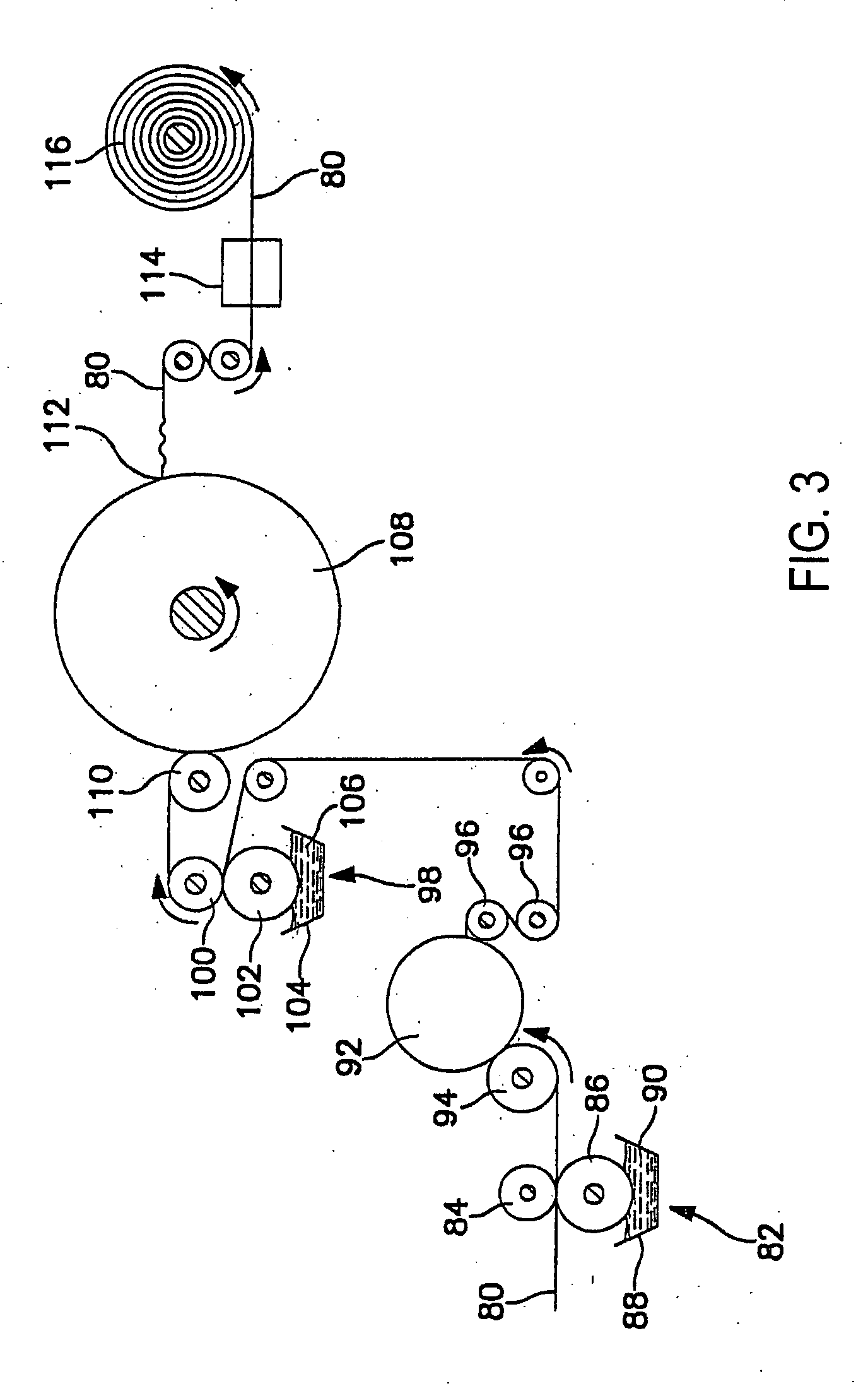Splittable cloth like tissue webs
a tissue web and cloth-like technology, applied in the field of absorbent paper products, can solve the problems of adverse effects on the strength of the paper web, the difficulty of producing a high-quality paper product, and the adverse effects of other characteristics of the produ
- Summary
- Abstract
- Description
- Claims
- Application Information
AI Technical Summary
Benefits of technology
Problems solved by technology
Method used
Image
Examples
example 1
Sample No. 1
[0138] A pilot tissue machine was used to produce a layered, uncreped throughdried towel basesheet in accordance with this invention generally as described in FIG. 2. After manufacture on the tissue machine, the uncreped throughdried basesheet was printed on each side with a latex binder (moisture barrier coating). The binder-treated sheet was adhered to the surface of a Yankee dryer to re-dry the sheet and thereafter the sheet was creped. The resulting sheet was converted into rolls of single-ply paper towels in a conventional manner.
[0139] More specifically, the basesheet was made from a stratified fiber furnish containing a center layer of fibers positioned between two outer layers of fibers. Both outer layers of the basesheet contained 100% northern softwood kraft pulp and about 3.75 kilograms (kg) / metric ton (Mton) of dry fiber of a debonding agent (ProSoft® TQ1003 from Hercules, Inc.). Each of the outer layers comprised 25% of the total fiber weight of the sheet...
example 2
[0160] Topography was examined in sheets from single perforated sheets taken from five different paper towel products, including Samples Nos. 1 and 2 described above, all of which were conditioned under TAPPI conditions at 73° F. and 50% relative humidity: [0161] 1. VIVA® paper towels, manufactured by Kimberly-Clark (Dallas, Tex.), obtained Nov. 2003 in Neenah, Wis. The sheet studied had dimensions of 28.5 cm by 25.5 cm, a conditioned mass of 5.03 grams. [0162] 2. SCOTT® paper towels, manufactured by Kimberly-Clark (Dallas, Tex.), obtained Nov. 2003 in Neenah, Wis. The sheet studied had dimensions of 28 cm by 28 cm, and a conditioned mass of 2.86 grams. [0163] 3. BOUNTY® paper towels, manufactured by Procter & Gamble (Cincinnati, Ohio), obtained Nov. 2003 in Neenah, Wis. The sheet studied had dimensions of 28.5 cm by 28.5 cm, and a conditioned mass of 3.26 grams. [0164] 4. Sample No. 1, having dimensions of 28 cm by 29.5 cm, and a conditioned mass of 4.38 grams. [0165] 5. Sample No....
PUM
| Property | Measurement | Unit |
|---|---|---|
| Length | aaaaa | aaaaa |
| Length | aaaaa | aaaaa |
| Fraction | aaaaa | aaaaa |
Abstract
Description
Claims
Application Information
 Login to View More
Login to View More - R&D
- Intellectual Property
- Life Sciences
- Materials
- Tech Scout
- Unparalleled Data Quality
- Higher Quality Content
- 60% Fewer Hallucinations
Browse by: Latest US Patents, China's latest patents, Technical Efficacy Thesaurus, Application Domain, Technology Topic, Popular Technical Reports.
© 2025 PatSnap. All rights reserved.Legal|Privacy policy|Modern Slavery Act Transparency Statement|Sitemap|About US| Contact US: help@patsnap.com



